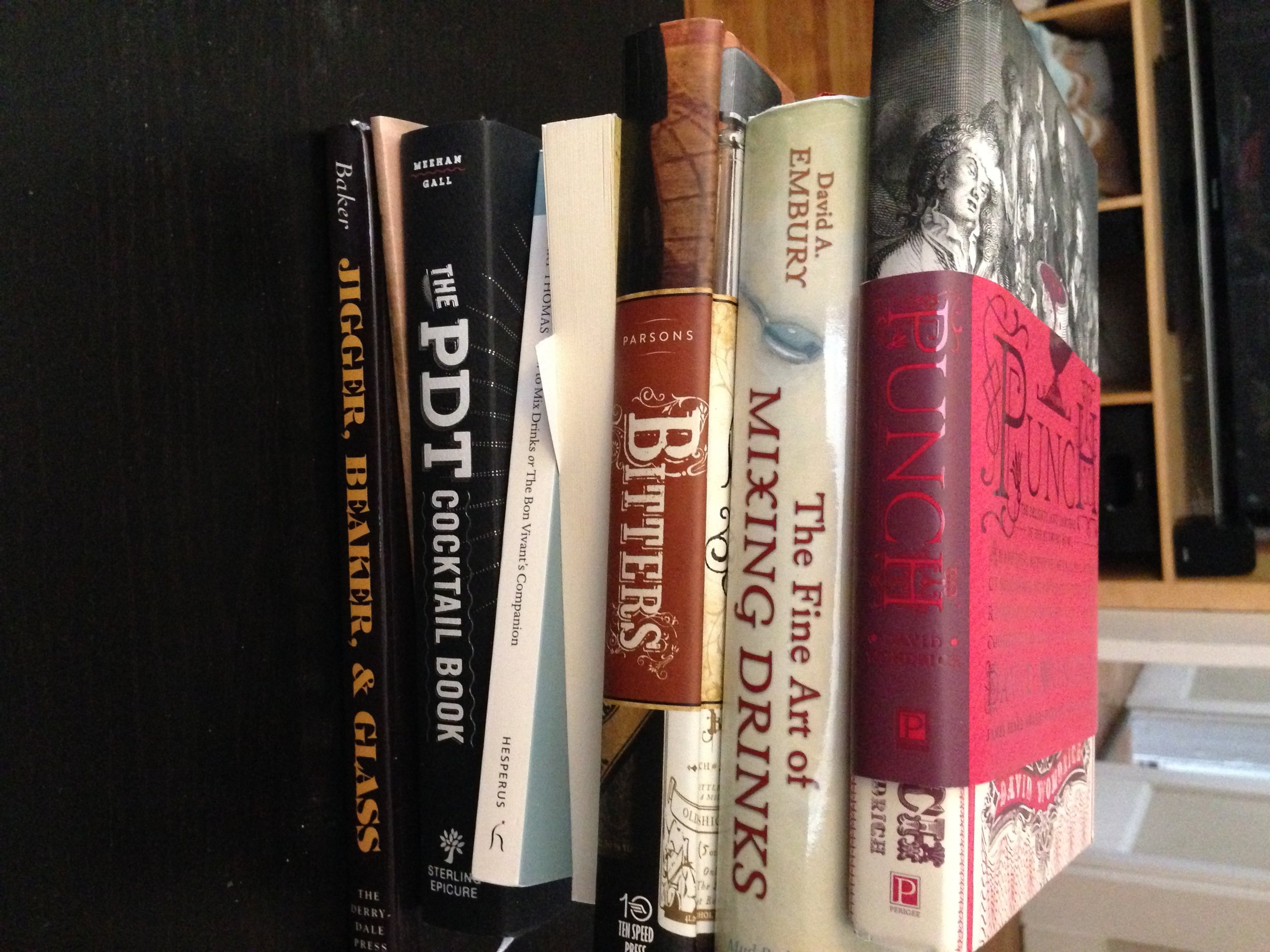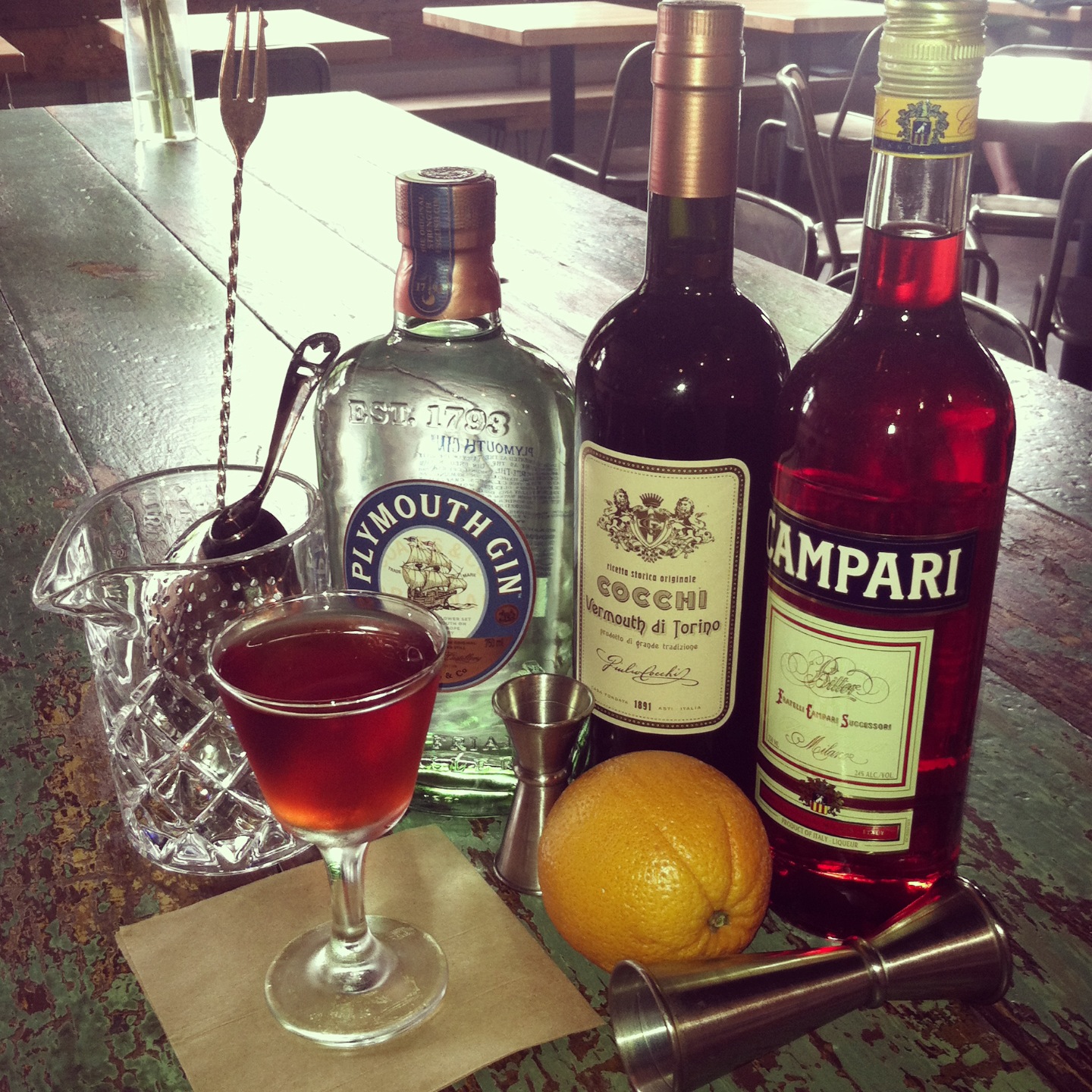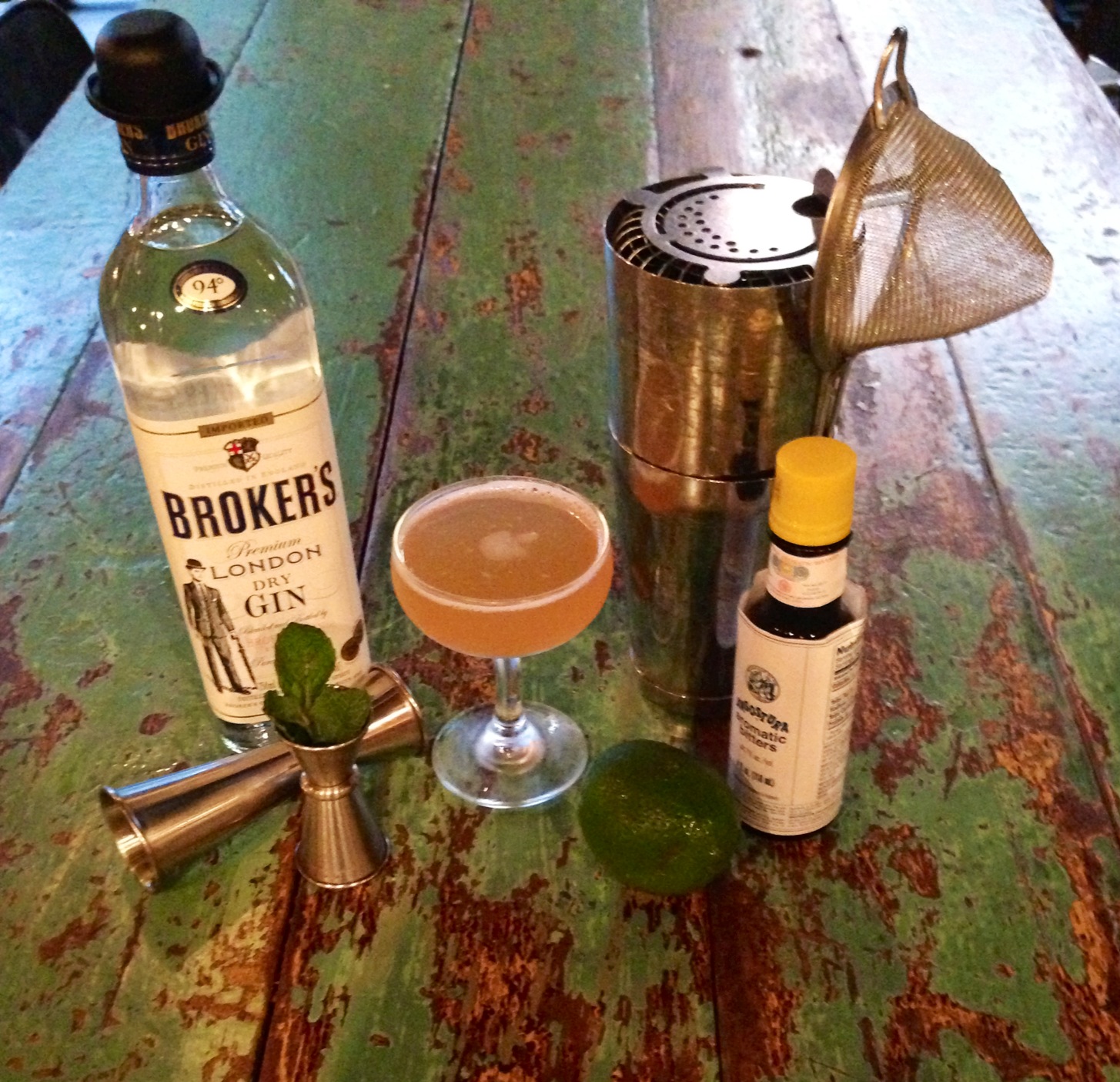 Before you get worried, let me clarify: the title describes my reading list, not my nightly routine. Currently, I've got a foot-high stack of cocktail history books on my coffee table and a couple more in my bag. As both a craft bartender and food/drink writer, deep dives into cocktail history and lore have sharpened my skills and deepened my interest in the subject.
I'm also lucky to have friends and loved ones who loan me books. Since the craft cocktail movement is still building here in Birmingham, it is also relatively new to public understanding. As a result, local libraries don't have much related material. My coworkers and friends have been invaluable in pointing me towards the best history and reference books in the field. Here are a few books that I've thoroughly enjoyed:
Before you get worried, let me clarify: the title describes my reading list, not my nightly routine. Currently, I've got a foot-high stack of cocktail history books on my coffee table and a couple more in my bag. As both a craft bartender and food/drink writer, deep dives into cocktail history and lore have sharpened my skills and deepened my interest in the subject.
I'm also lucky to have friends and loved ones who loan me books. Since the craft cocktail movement is still building here in Birmingham, it is also relatively new to public understanding. As a result, local libraries don't have much related material. My coworkers and friends have been invaluable in pointing me towards the best history and reference books in the field. Here are a few books that I've thoroughly enjoyed:
- Jim Meehan's The PDT Cocktail Book This funky, modern cocktail book breaks down every part of the bar experience into interesting and manageable segments. All pieces of drink-making and preparation are explained, including infusions and syrups specific to each recipe. Though some home bartenders may have to rebalance a few recipes to please their own palates, it's a wonderfully accessible primer on all things bar-related.
- Jerry Thomas's How to Mix Drinks or The Bon Vivant's Companion or The Bartender's Guide Thomas's historical cocktail guide is delightfully Victorian without being prudish. Widely considered the great-great-great grandfather of modern mixology, Thomas is responsible for much of the flair and technique that made the American Cock-Tail into what it's become today. However, many of the recipes are written in measurements vague enough to kill even the best constructed drink. Luckily, modern cocktail historian David Wondrich has written a fantastic biography of Jerry Thomas called Imbibe! that translates and, in some cases, slightly rebalances these cocktails for the modern palate.
- Wondrich also crafted a fantastic history of punch in Punch: The Delights (and Dangers) of the Flowing Bowl. At once sassy and informative, this guide traces the drink's origins, takes a stab at its exact date of birth, goes on to give historical recipes with translated, user friendly modern equivalents.
- David Embury's The Fine Art of Mixing Drinks is an unintentionally hilarious, overtly sexist and absolutely curmudgeonly take on bartending. Embury himself never worked a bar shift, but had such strong ideas of how drinks should be made that he taught seminars on the matter after Prohibition. I'm only a few chapters in, but have laughed out loud multiple times.
- Brad Thomas Parsons's Bitters is both historical and practical for the home bartender. If you've ever been curious on what exactly bitters are or how they're made, pick up a copy and enjoy. (Disclaimer: I've only read the introduction).
- Ted "Dr. Cocktail" Haigh's Vintage Spirits and Forgotten Cocktails is a delightful romp through pre- and post-Prohibition cocktails. Home bartenders beware: some of the recipes aren't balanced for modern tastes. Some drinks might not be to your taste.











